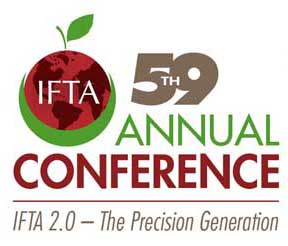The cherries in that slice of pie most likely came from an orchard in Michigan, probably one in the northwest corner of the state near Traverse City.

Dr. Gregory Lang of Michigan State University discusses management techniques at a Bear Lake tart cherry farm on Thursday, Feb. 11, 2016, as part of the International Fruit Tree Conference in Grand Rapids, Michigan. (Ross Courtney/Good Fruit Grower)
On Michigan’s “glove” shape, that would be at the tip of the ring finger, home to about 50 percent of the nation’s production of tart cherries. The whole state accounts for 75 percent.
Facing the same issues of labor restraints, the growers here are making the transition from singular, large trees to high-density plantings that lend themselves to mechanization so common in apples and sweet cherries elsewhere.
The only problem? Growers receive an average of 30-35 cents per pound return for their tart cherries, a process-only crop already harvested by mechanized pickers, said Calvin Lutz II as he discussed pruning techniques with Michigan State University researchers and extension educators Thursday, Feb. 11, 2016, at his Bear Lake orchard on Day 6 of the International Fruit Tree Association conference. Costs become even more important in orchard management decisions at that rate.
He has a mechanical hedger, but recently found it faster and cheaper to instruct two workers with Christmas tree machetes to prune a block of three-year-old Montmorency cherry trees planted on Mahaleb root stock. He liked the results of fruit bud

Nikki Rothwell of the Northwest Michigan Horticulture Research Center discusses management techniques at a Bear Lake tart cherry farm on Thursday, Feb. 11, 2016, as part of the International Fruit Tree Conference in Grand Rapids, Michigan. (Ross Courtney/Good Fruit Growerregrowth, he said.
regrowth, he said.
The final day of the IFTA conference today will take about 30 people to several more northwestern Michigan orchards, a cider maker and the Northwest Michigan Horticultural Research Center.

Calvin Lutz II ponders management techniques at his Bear Lake tart cherry farm on Thursday, Feb. 11, 2016, as part of the International Fruit Tree Conference in Grand Rapids, Michigan. The tart cherry industry faces a host of tough decisions about the transition to high-density plantings. “We don’t know what we’re doing,” Lutz said with a laugh. (Ross Courtney/Good Fruit Grower)






Does anyone ship fresh cherries?